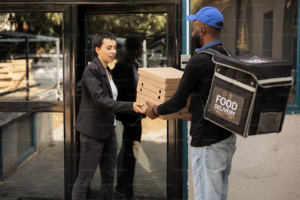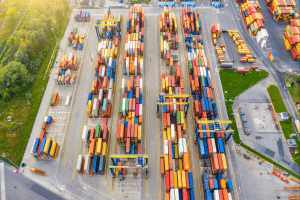“The role of national geospatial agencies is to provide authoritative data information covering the whole country in sufficient detail with different use cases that match the required quality criteria for any specific use,” says Jani Kylmaaho, Director of Development and Digitalization at the National Land Survey of Finland.
What do you envision the future of the geospatial ecosystem to be like?
There probably will not be a single separate geospatial ecosystem, but it could be a little bit dangerous to concentrate on the geospatial domain only. Rather, I would like to see the geospatial being a virtual part of all other ecosystems, like the geospatial dimension, bringing more value into bio-economy for instance, automated agriculture, safety, health, and smart city ecosystems.
So, we need to focus on our efforts to communicate the benefits of geospatial data to the communities and work with them to bring the value of geospatial data into the activities within the communities and the information or even the knowledge to solve their issues.
Do you think the role of national geospatial agencies is evolving? How have the rules and mandates of the agency evolved?
In our case, instead of just providing general maps or just the map data, the national geospatial agencies are expected to provide authoritative geospatial information or knowledge.
One particular aspect, where the rules and mandates of the agency has scope for evolution is the analysis-ready data that is applicable to an increasing number of users, and needs in various ecosystems.
However, the national geospatial agencies can’t respond to all knowledge needs. There’s also the role of the private sector to leverage the national geospatial agencies’ data and build it up for specific use cases. And therefore the national geospatial agencies need to focus on their key mission.
In my understanding, The role of national geospatial agencies is to provide authoritative data information covering the whole country in sufficient detail with different use cases that match the required quality criteria for any specific use.
With the increasing adoption of geospatial technology and data across sectors, how does your agency keep track of the evolving demand and requirements of users?
We are in constant discussions with the users of data on a frequent basis, especially with those who use our remote sensing data. And the database in our case is open data, so anybody can go on and download it from our websites and services.
We see that downloads and the usage of the data are growing almost exponentially all the time. We have tried to conduct surveys with the key stakeholders that are using the data, and are also conducting some open surveys with the public to get knowledge about how people are using the data and how they would like to use the data.
We actually have a special focus towards municipalities that are our key users and stakeholders for the National Land Survey in Finland.
Is your agency making efforts to disseminate geospatial knowledge to everyone?
We have created a geospatial client for the public sector, which can be easily embedded on public websites or digital services without any charge. It shows any spatial data from the SDI in statistical information that can be combined with the spatial data in the client.
Also, we are providing our data through the new REST type of OGC APIs, which are friendlier towards developers to take into use, even if they are not geospatial expert developers.
We have planned to develop a website with the guidance of developers on how to use our APIs and data. We’ve developed a platform where we can host analysis-ready, remote-sensing data for our partners.
They can build their analysis on the data that’s provided on the platform without the need to download the data and set up their own environments and systems for processing and analyzing the data.
How does your agency deal with the increasing demand for digital transformation and the major challenges associated with it?
At the core of digital transformation is the change in the way we do things. Many times to make a significant impact a relatively small change in the way we do things is enough with the help of new technologies, without making any changes to technological solutions.
For instance, we have changed the wording of the letters we send to our customers regarding land issues to be more understandable with more clarity in the letters. We have received very few queries about these issues after we changed the wording in the letters.
However, sometimes moving forward with digitalization requires changes in law regulations to enable more flexible adaptation to the constant change in the way we arrange our digital services. And further, as I mentioned before, we’ve started a transformation of our topographic data collection using machine learning to enable our operators to focus on updating those areas where changes have actually occurred without having to manually go through all the areas.
This way we can focus on ensuring the quality of the data instead of making a lot of routine work.









